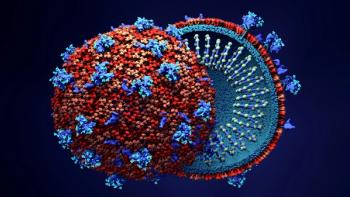
Study Raises Concerns Over Insurance Barriers to HIV Prevention Medications
Despite its efficacy, PrEP remains underutilized compared to the need for it. High costs are among the barriers to PrEP use, along with limited knowledge among clinicians, lack of health insurance, stigma, and underestimation of personal HIV risk.
HIV preexposure prophylaxis (PrEP) refers to taking antiretroviral medication to prevent HIV. In October 2019, Descovy (emtricitabine/tenofovir alafenamide) became the second FDA-approved drug for PrEP, following Truvada (emtricitabine/tenofovir disoproxil fumarate) which was approved for PrEP in 2012.
When taken regularly as prescribed, PrEP is highly effective at preventing HIV, reducing the risk of sexual transmission of HIV by
Access to PrEP is a crucial component of the
Researchers at the University of Virginia conducted a cross-sectional study to understand plan coverage, prior authorization, and specialty tiers for Truvada and Descovy across the US. The study results were published November 10th in
The researchers, led by
“Our study demonstrates that there are increased prior authorization requirements for PrEP in areas with higher rates of HIV diagnoses, which is in direct opposition to the United States’ Ending the HIV Epidemic initiative,” McManus stated in an email to Managed Healthcare Executive.
Results showed that the majority of qualified health plans covered Truvada at a higher rate (98.1% in 2018, 99.8% in 2019, and 94.8% in 2020) compared to Descovy (91.9% in 2018, 92.7% in 2019, and 87.4% in 2020). In the southern region, plans required prior authorizations for PrEP at the highest rates in all three years. Also, in the South, the prior authorization rate for Truvada increased significantly, from 10% in 2018 to 46.8% in 2020.
The analysis also found that health plans with an exclusive prior auth requirement for Truvada were more prevalent in jurisdictions with EHE initiatives compared to non-EHE jurisdictions. Furthermore, health plans were more likely to place Truvada on a specialty tier compared to Descovy.
The study found that although health plans were more likely to cover Truvada, the drug was also more likely to require prior authorization and/or be placed on a specialty copay tier than Descovy. In their paper, the authors described this difference as “notable,” considering the broader clinical indication for Truvada, its
“To end the HIV epidemic, the United States must align its health policies in ways that make HIV care and prevention affordable, sustainable, and accessible. Currently, the involvement of for-profit health insurance companies, for-profit pharmaceutical companies, and other for-profit entities leads to commercial determinants of health, which are causing barriers to a unified approach to ending the HIV epidemic in the United States,” McManus stated.
Regarding steps to improve access to PrEP, she explained: “Insurance reforms, increased action from state department of insurance regulators, and a national PrEP program could be actions to provide equal access to communities and individuals who would most benefit from PrEP.”
Newsletter
Get the latest industry news, event updates, and more from Managed healthcare Executive.






















































